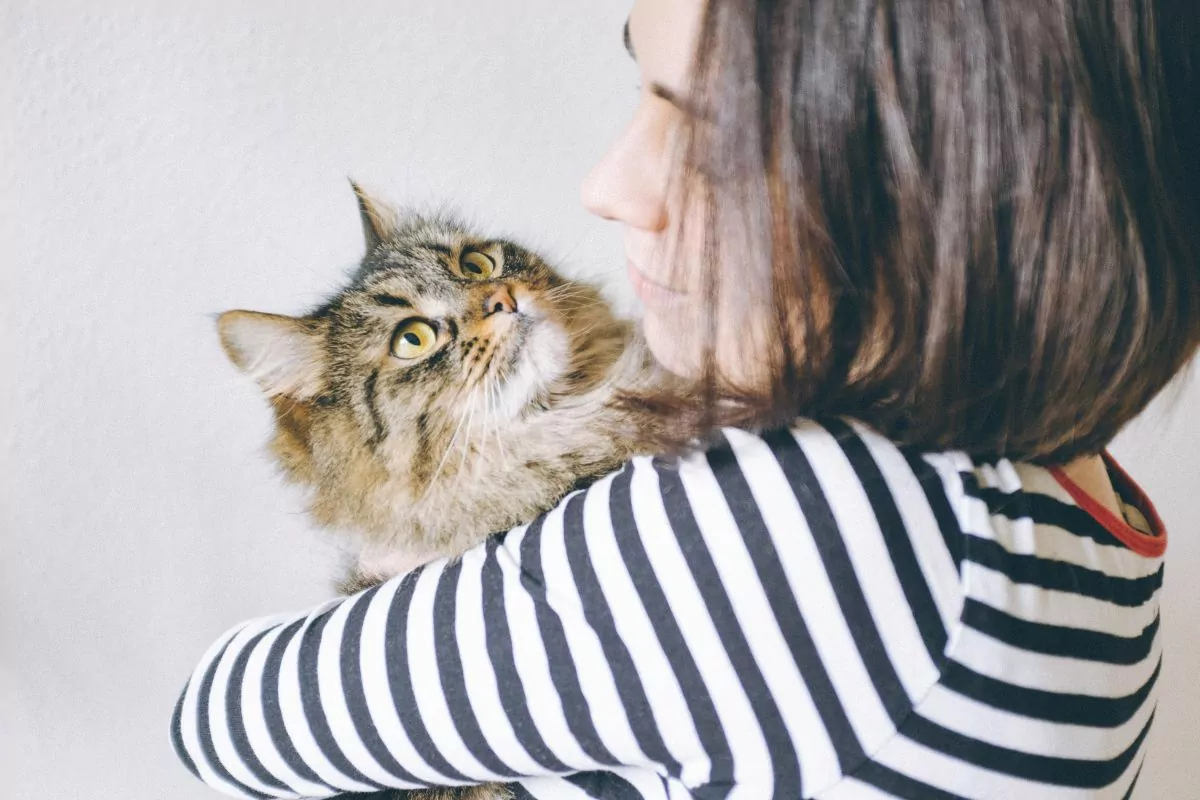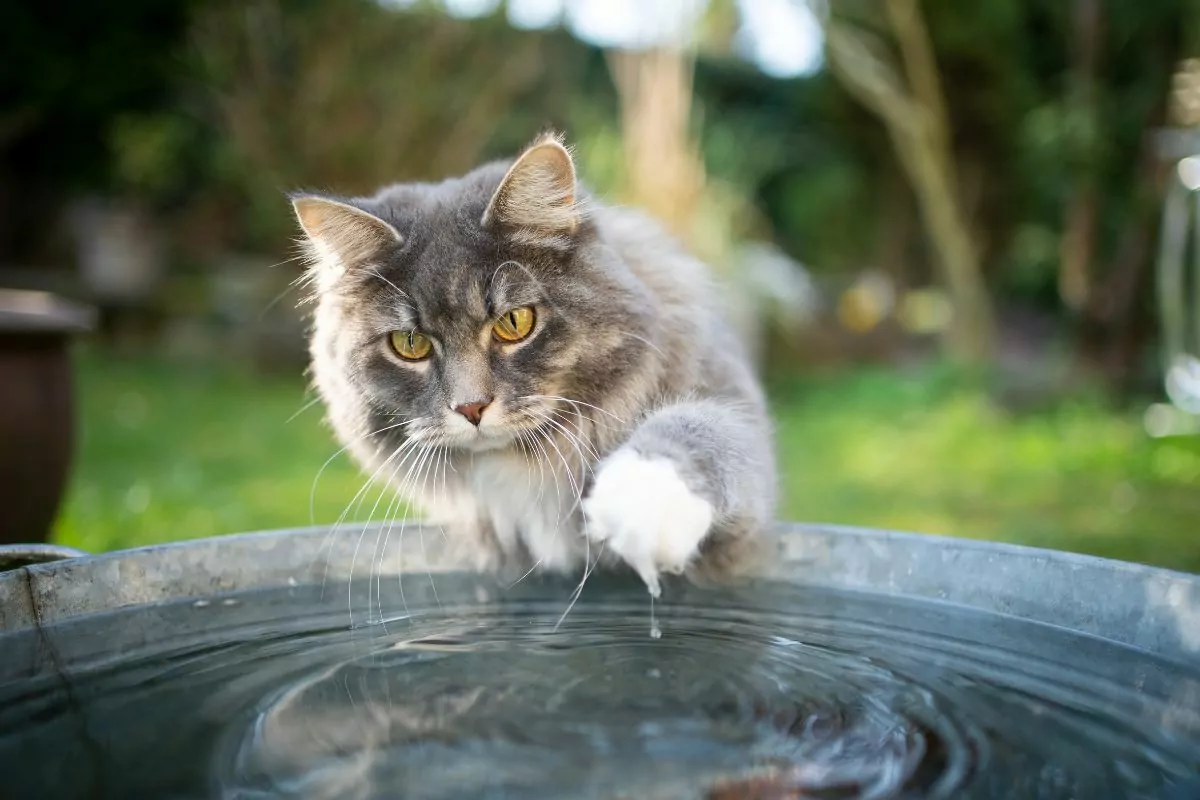Cats and Tapeworms
Tapeworms in cats are intestinal parasites that affect cats living indoors and outdoors.
They get affected by several types of tapeworm species. Most commonly seen are Dipylidium, Caninum, and Taenia taeniaeformis.
As a cat owner, you want to keep your feline friend active and healthy and lower the transmission risk of tapeworms; so it is good to understand the parasite’s life cycle, diagnosis, treatment options, and preventative measures to help keep these parasites at bay.

Symptoms of Tapeworms in Cats
Tapeworms in cats do not commonly lead to severe disease or high-risk complications.
A quick and easy reference list of symptoms of tapeworm infection in cats is listed below:
- Diarrhea
- Emaciation
- Nervous system signs such as seizures
- Blockage of the intestinal system
- Visible sesame seed-like tapeworm segments hanging from the anus
- Vomiting
- Bloating
- Dull and shaggy-looking coat
- Reduced appetite
- Increased frequency of cleaning of the anal area
Be aware that the appearance of symptoms depends on age, breed, body condition, and parasite load. These symptoms and their severity/frequency depend on the level of infection.
Some of these symptoms may not be present in cats suffering from a mild infection. In cats suffering from an increased level of infection, the symptoms are more visible and more severe.
The most severe symptoms are seizures, blockages, and severely decreased overall body condition.
How Do Vets Diagnose Tapeworms?
Vets diagnose tapeworms in cats by performing a fecal examination. However, to diagnose the exact species of tapeworm, they will use either a PCR test or microscopical examination.
For the fecal examination, a stool sample mixed with a specific solution makes the eggs be more visible when examined under the microscope.
Keep in mind that sometimes false negative results and also false positive results are a possibility. In the instance of the above, it is because either the intestinal worms were not mature enough, thus not producing eggs, or because more specific solutions are needed to detect the tapeworm species.
However, if you see eggs or segments in stools hanging from your cats’ anus or in their vomit, you can be sure your feline has acquired a tapeworm infection. Where possible, collect a stool sample with the segments present and take it to your veterinarian for a definitive diagnosis.
What do Tapeworms in Cats Look Like?
Keep reading if you are wondering what tapeworms look like in cats.
Tapeworms are part of the invertebrate class called Cestoda. Cestoda is a group of parasitic flatworms with about 5,000 species.
Tapeworms morphologically are flat and long hence the name flatworms. They are also white, and their length is around eight inches. They possess a head and have suckers or hooks to attach themselves to their hosts and feed. Also, their six sets of teeth-like structures fill their mouth.
They can affect their host brains, livers, and digestive tracts.
Also, tapeworms can infect various species, such as humans, domestic animals, and fish.
The sometimes visible segments in the stool are proglottids and are infectious when consumed by other animals or humans.
What are the Causes?
If your cat has tapeworms, you are probably asking yourself, what causes tapeworms in cats?
For a cat to contract tapeworm, it must consume the intermediate host in which the parasite resides. Tapeworms, more frequently than not, need an intermediate host.
There are several ways for cats to contract tapeworms, depending on the parasite species. The most common intermediate hosts and causes of tapeworms in cats are:
- Fleas
- Frogs
- Snakes
- Fish
- Rats, mice (rodents)
Dipylidium caninum infects cats when they eat fleas. This tapeworm species is also the most common type found in cats.
You are probably wondering how fleas contract this parasite in the first place. Let us explain!
The tapeworm passes proglottids into the environment. These proglottids then dry and develop a golden color. The release of eggs into the environment follows.
Flea larvae ingest these eggs, and as cats groom or scratch themselves, they ingest the flea larvae with infective eggs from their coats.
The tapeworms then travel to the small intestine, attaching themselves to feed via suckers or hooks.
Cats acquire Taenia taeniaeformis when they eat rodents, such as infected mice or rats. This tapeworm species is commonly found in outdoor cats and cats that hunt.
Can Feline Tapeworms be Transmitted to Humans?
Yes, the transmission of feline tapeworms to humans is possible.
However, humans become infected in the same manner that cats get infected. Hence, they must consume an infected flea or infected stools.

What About Inter-Feline Transmission?
How do cats get tapeworms from one another, and are tapeworms contagious in cats? The answer is they don’t get tapeworms for other cats.
Tapeworm infections are not contagious. The cat must consume the infective intermediate host for transmission and infection.
However, if you have cats sharing the same household, deworming and getting rid of fleas is always advisable. Usually, if one cat has fleas, the other cat or cats sharing the household will likely have them too. Cats will ingest fleas when grooming themselves.
In the case of a flea outbreak, wash all your cats’ bedding and clean carpets, cushions, covers, etc., to ensure no fleas are present in your household. This thorough cleaning will keep you and your cats safe from pesky fleas.
Treating all cats in the household for tapeworms is imperative, whether they are showing symptoms or not, to lower the transmission risk.
Roundworms vs. Tapeworms in Cats
Cats can become infected with roundworms by ingesting contaminated fecal matter. Ingestion can happen through contaminated soil, licking their coats and paws that have been in contact with contaminated surfaces, contaminated water, or ingesting cockroaches.
Roundworms are harmful and dangerous for kittens, leaving them malnourished with respiratory disorders and intestinal blockages.
Roundworms are long and slender white worms. Unlike tapeworms, which have flat bodies with segments, roundworms have round bodies with no segments.
Symptoms of roundworm infection:
- Coughing
- Vomit
- Bloating
- Underdeveloped
- Poor body condition
They can pass on to humans and can have severe consequences. Infection can come through ingestion or skin contact. As the parasite migrates through organs in the body, it can damage them, causing severe health problems for the carrier.
Pinworm vs. Tapeworm in Felines
Pinworms do not infect cats. Another name for pinworms is threadworms.
They may look similar to tapeworms, but they are not the same and are not found in felines ever.
In contrast to tapeworms, they are smaller in size and resemble thread. Transmission of pinworms between people is very easy and occurs via the fecal-oral route.
So rest assured, if you or a family member has a pinworm infection, it is 100% not from your cat.
Should I Quarantine my Cat With Tapeworms?
Oh no, my cat has tapeworms, so should I quarantine my cat with tapeworms? The answer is that a veterinarian has to decide if you need to quarantine your cat. Also, the vet considers health factors and your cat’s living conditions.
How to Get Rid of Feline Tapeworms?
Do you know how to get rid of tapeworms in cats, and what is the best medicine for tapeworms?
The treatment prescribed for your cat by your veterinarian depends ultimately on what type of tapeworm has infected your cat.
The most commonly administered deworming medications are:
- Praziquantel (injection, pill, or local administration)
- Epsiprantel (pill form)
- Fenbendazole
Remember to always complete the full course of medication prescribed for your cat by your veterinarian to ensure the optimum efficacy of the drugs and avoid any relapse or incomplete therapies. Cutting a treatment short eventually causes more harm than good.
Suppose your cat displays the more severe side effects of tapeworms in cats, such as blockage of the intestines. In this case, the vet will run additional diagnostic tests.
When is it Time to go to the Vet?
It is always time to go to the vet. It is impossible if you are wondering how to get rid of tapeworms without going to the vet.
If you think your cat may have tapeworm, you must consult your vet to assess and diagnose your cat. They will give the proper medications and guidelines to follow.
There are no home remedies for these parasites. So if you catch yourself searching the web for how to get rid of tapeworms in cats without going to the vet, stop right there and instead book an appointment with your vet for the sake of your health and your cat’s health.
Don’t put yourself and your cat at risk by following advice not given by a veterinary professional.
Can Feline Tapeworm be Prevented?
Of course, you can prevent feline tapeworm infections. Your best bet and ally are good hygiene practices.
- Remove any fecal matter as soon as your cat deposits it. Always keep your cat litter clean.
- Provide your pet with clean water every day to avoid contamination.
- Use a flea prevention treatment, such as a spot-on treatment or collar.
- Ensure your cat does not come into contact with contaminated feces or prey.
- Wash your hands thoroughly, and when children are playing outdoors, watch for any possible animal droppings.

Wrapping Things Up
Tapeworms in cats are common, and medication treatment is successful and inexpensive. They are not particularly dangerous or life-threatening except for some rare cases. Of course, as reassuring as this may be, the disease must still not be taken lightly.
If you notice a change in behavior in your furry companion or their feeding habits, take them to the veterinarian as soon as possible for a thorough exam and assessment.
Since fleas are one of the main routes for a cat to acquire a tapeworm infection, it is advisable to keep up to date with flea prevention. There are various options available such as spot-on treatments and oral medications. Always consult your veterinarian before purchasing any flea treatment; they will advise you on the best option for you and your feline.
Treatment for tapeworms in kittens starts from six weeks of age, receiving preventive medicine once every month. Once they reach six months of age, they can continue receiving preventative flea treatment every three months. In adult cats, the treatment is given every two to six months, depending on their lifestyle.
Always maintain good hygiene levels. Clean out litter trays frequently and make sure bedding is clean. Ensure to always wash your hands after contacting any contaminated surface, and do not touch your face if your hands are not clean.
If you notice your cat cleaning its anal area more frequently or seeing any small white rice-like segments on your cat’s coat, feces, or vomit, then a short trip to a vet is in order, and the culprit is more than likely to be a tapeworm.
Undoubtedly a short course of medication and friendly advice from your veterinarian will have your cat purring with delight once again!
